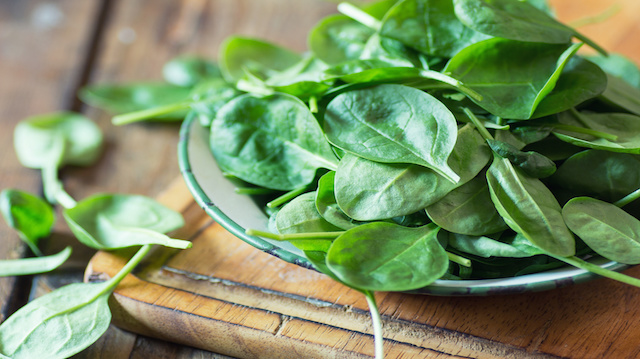
Advertisement
Glaucoma is an eye disorder that can result in gradual vision loss. If you drop the ball on your eye health, glaucoma may even cause blindness. Luckily, changing your diet can help prevent this condition before it’s too late. The secret to better eye health and stopping glaucoma in its tracks? Nutritious green leafy vegetables such as lettuce, spinach and everyone’s favorite, kale.
The next time you’re feeling hungry, consider skipping the junk food and enjoy a healthy salad with carrots and leafy greens to keep your eyes sharp and improve your overall health.
According to a study published in the Journal of American Medical Association Ophthalmology, and conducted by researchers from Brigham and Women’s Hospital and Harvard Medical School, adding more green leafy vegetables to a person’s diet can significantly lower his risk of developing glaucoma.
Glaucoma damages a person’s optic nerve. The most common type of glaucoma is primary open-angle glaucoma (POAG), which has no signs or symptoms except gradual vision loss. At least three million Americans have glaucoma, with 120,000 people going blind because of it.
The condition is described as an imbalance in production and drainage of aqueous humor, a clear fluid that can accumulate in the eye’s anterior chamber. Aqueous humor builds pressure inside the eye, and when this pressure reaches critical levels in a person with glaucoma, they may suffer from irreversible nerve damage and vision loss.
Nitrates and the risk of glaucoma
The researchers posited that increasing the intake of leafy greens with dietary nitrate improved blood circulation, which then helped correct the restricted flow of blood to the optic nerve. This, they believed, was the reason why eating leafy greens helped lower the risk of blindness linked to glaucoma.
For the study, researchers analyzed the diets and eye exam results of 105,000 people. The data was gathered from 64,000 female participants involved in a study that took place between 1984 and 2012, along with 41,000 male volunteers who took part in a study that spanned 1986 to 2012.
All study participants were older than 40 and weren’t diagnosed with chronic glaucoma at the start of the study.
The researchers then divided the participants into five dietary groups based on their consumption of leafy vegetables. All volunteers were also required to report the results of eye exams undertaken every two years.
The researchers noted that 1,483 participants eventually developed glaucoma by the time the study concluded.
The health benefits of green leafy vegetables
The researchers concluded that consuming dietary nitrate and leafy greens can lower the risk of chronic glaucoma by up to 30%. Some of the volunteers even had up to 50% lower risk of vision loss.
The researchers added that the volunteers who consumed at least 240 mg of nitrate per day experienced the greatest reduction in POAG risk.
Incorporate these green leafy vegetables into your diet to boost your eye health and lower your risk of developing glaucoma:
- Brussels sprouts
- Broccoli
- Cabbage
- Cauliflower
- Collard greens
- Kale
- Lettuce
- Spinach
Findings revealed that collard greens and kale had the most persistent and significant impact on reducing the risk of POAG.
While at least 10% of all individuals diagnosed with glaucoma is expected to eventually lose their sight, consuming leafy green vegetables full of dietary nitrate may help the rest of those with the condition.
According to the American Optometric Association, leafy green vegetables like collards and turnip greens are rich in lutein and zeaxanthin. These two antioxidants are known to decrease chronic eye diseases such as glaucoma, along with cataracts and age-related macular degeneration.
If you want to replicate the positive results of the study and lower your risk of developing glaucoma, follow a healthy diet and eat more green leafy vegetables.
Sources:
Advertisements







